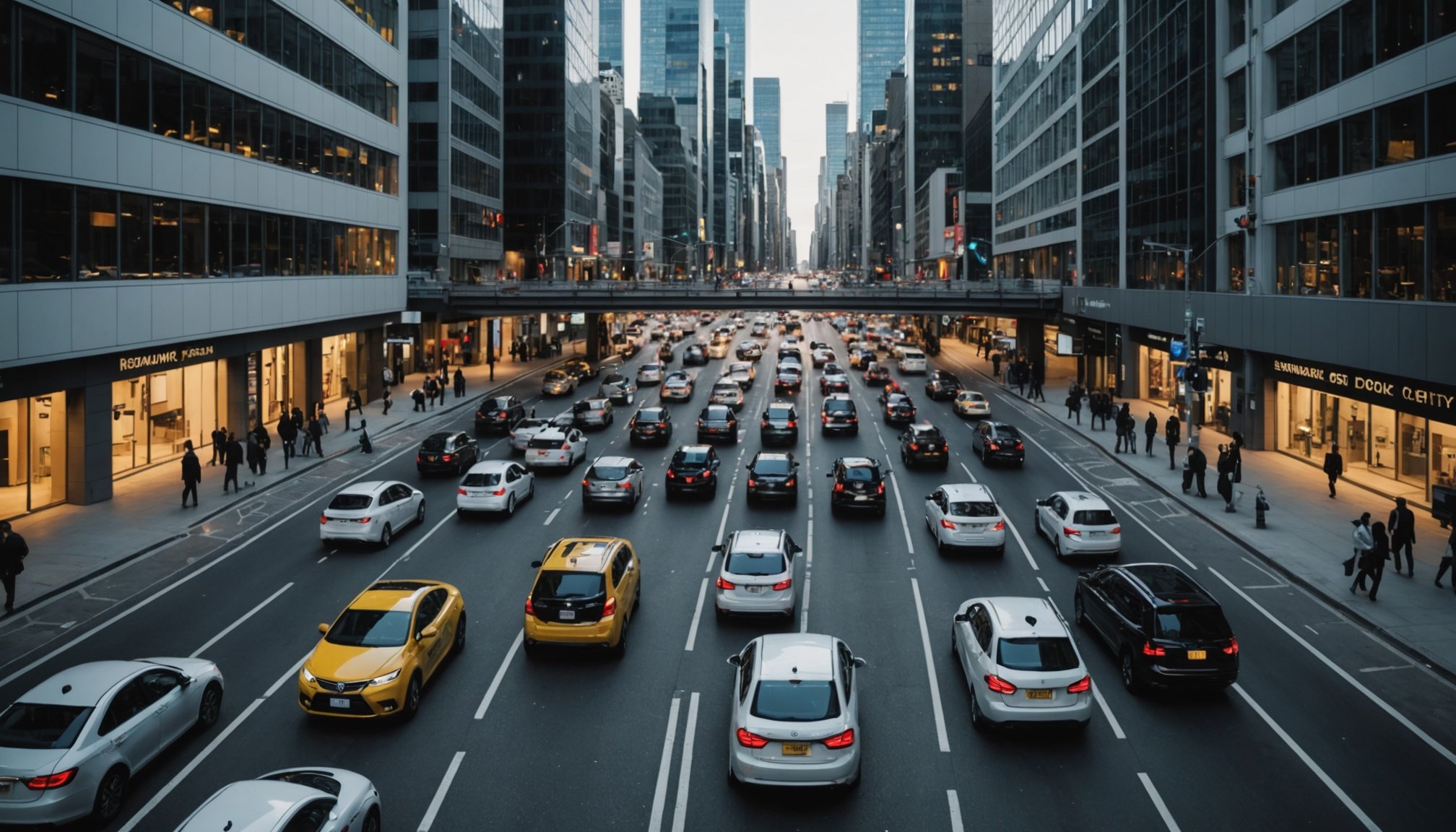Understanding AI in Urban Traffic Management
Incorporating AI in transportation represents a significant shift in urban traffic solutions. Artificial intelligence applications enhance the efficiency and safety of city environments. AI technologies, ranging from adaptive traffic signals to predictive analytics, are being employed to improve traffic management systems. By analysing vast data analytics, AI can rapidly identify patterns, anticipate congestion, and propose effective countermeasures.
Data analytics plays a critical role in interpreting transportation data, offering insights that lead to strategic decisions in urban traffic management. AI’s ability to process complex datasets means it can adapt to changing traffic conditions in real-time, thereby enhancing transportation systems’ overall responsiveness.
Also read : Innovative Approaches to Boosting AI-Driven Image Processing Solutions
Several case studies illustrate the successful application of AI in urban settings. For instance, certain cities have implemented smart traffic systems which use real-time data to minimize delays and optimise power resources. Here, AI distinguishes itself by providing flexible, scalable solutions tailored to each urban environment’s unique challenges. These implementations underscore the transformative potential of AI, enabling more streamlined, sustainable urban traffic solutions. The insights gained from successful examples can serve as a guiding framework for other cities seeking to implement AI-driven improvements.
Benefits of AI for Urban Mobility
Artificial Intelligence (AI) is revolutionizing urban transportation by enhancing mobility and efficiency. First and foremost, AI contributes significantly to improved traffic flow, effectively reducing congestion. For example, AI can adjust traffic signals in response to real-time traffic conditions, ensuring smoother vehicle movement.
This might interest you : Empowering Breakthroughs: Harnessing Quantum Computing to Transform Large-Scale Optimization Problems
Additionally, AI’s predictive capabilities play a pivotal role in implementing safety measures. By analysing data patterns, AI can forecast potential accidents and alert authorities, enabling preemptive actions. This capability dramatically enhances the safety of urban environments, protecting both pedestrians and drivers.
Another significant benefit is the environmental impact. Optimised traffic management systems, controlled by AI, help reduce emissions by minimising idling times and enhancing route efficiency. This leads to cleaner urban air quality and aligns with contemporary ecological goals.
Urban transportation improvements also mean higher satisfaction rates among city dwellers, as travelling becomes seamless and quicker. The integration of AI into public transport scheduling further optimises efficiency, promoting the use of eco-friendly travel options. Overall, the benefits of AI in urban mobility extend far beyond simple traffic management, offering a holistic enhancement to city living.
Challenges in Implementing AI Solutions
AI implementation challenges in urban traffic management are multifaceted, presenting hurdles that need addressing for successful adoption. Stakeholder resistance is a prominent issue, influenced by public perception of technological changes. Often, the fear of the unknown or potential job displacement contributes to hesitancy among communities and decision-makers.
Technical challenges emerge when integrating AI with existing infrastructure. Many urban landscapes possess outdated systems, requiring significant overhauls or adaptations. These modifications come with financial implications and technical demands. Ensuring seamless integration without disrupting current traffic patterns demands meticulous planning and execution.
Data privacy and security are critical concerns as well. Traffic management systems handle massive volumes of sensitive data, including vehicular patterns and personal information. The challenge lies in implementing robust security measures while maintaining data integrity and privacy. Cybersecurity threats necessitate comprehensive strategies to protect data from potential breaches.
Addressing these challenges requires collaborative efforts among tech developers, policymakers, and the public. Open communication and transparent processes can alleviate stakeholder fears. Investing in education and training assures communities that AI’s role is complementary, not adversarial. By tackling these challenges, cities can pave the way toward optimized urban transportation systems.
Real-World Examples of AI in Action
Real-world case studies demonstrate the significant impact of AI on urban transportation. Each example provides valuable insights into successful AI implementation.
City A: Smart Traffic Signals
City A showcases smart traffic signals that adapt based on real-time data. Using AI algorithms, these signals adjust timing for optimal flow, reducing congestion significantly. The result is a smoother traffic experience, minimized emissions, and enhanced safety for road users.
City B: Predictive Maintenance of Infrastructure
In City B, AI supports predictive maintenance, preventing infrastructure failures. By analysing infrastructure data, AI predicts when maintenance is needed, avoiding costly breakdowns. This proactive approach saves resources, extending the life of city facilities while reducing downtime.
City C: AI-Driven Public Transport Scheduling
City C utilises AI-driven public transport scheduling for improved efficiency. AI analyses passenger patterns to optimise schedules, ensuring timely service and increased ridership. This smart scheduling promotes public transport use, aligning with environmental goals.
These successful smart city examples highlight AI’s transformative capabilities in urban settings. The key outcomes from these projects include reduced congestion, cost savings, and enhanced public safety. Lessons learned here can guide strategic planning for other cities aiming to adopt AI-driven solutions.
Future Trends in AI-Powered Urban Transportation
As urban centres evolve, the future of AI in transport presents promising innovations. The potential advancements in AI algorithms for traffic management signify leaps in efficiency and precision. Enhanced algorithms are capable of managing a high volume of data, quickly adapting to traffic patterns and environmental changes. With this evolution, AI fosters smarter, more responsive urban traffic solutions tailored to dynamic cityscapes.
One of the most notable developments is the integration of autonomous vehicles into urban traffic systems. Autonomous technologies can communicate seamlessly with AI-driven management tools, creating synchronised, efficient traffic flows. This synergy promises fewer traffic jams and faster travel times, reshaping urban mobility landscapes significantly.
Looking ahead, predictions indicate that AI will play a critical role in shaping future urban mobility policies. These policies may encompass sustainable transportation initiatives and infrastructure changes to support self-driving vehicles. Cities might emphasise reducing environmental impacts while improving public transit.
AI-driven smart city trends will likely include enhanced connectivity and data-sharing models. Urban areas can benefit from these trends by integrating comprehensive AI governance frameworks. As AI in transportation matures, the effects on urban planning and mobility will continuously redefine city living.










